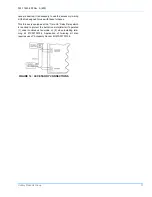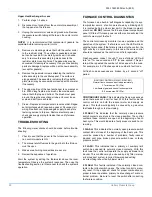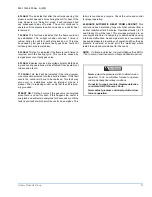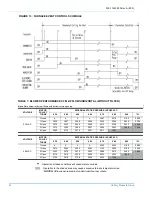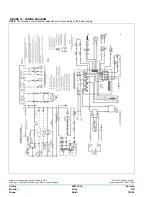
035-17443-000 Rev. A (800)
20
Unitary Products Group
Upper Heat Exchanger Access
1.
Perform steps 1-4 above.
2.
Disconnect vent piping from the vent motor assembly at
the top panel on the furnace.
3.
Unplug the venter motor wires and ground wire. Remove
the pressure switch tubing at the tap on the venter motor
housing.
NOTE: It is recommended that replacement gaskets be
available before removing venter motor.
4.
Remove six mounting screws that hold the venter motor
to the restrictor plate. The surface is gasketed and gas-
ket can be reused if it is carefully removed. It is neces-
sary to remove this assembly to gain access to the
restrictor plate mounting holes. The assembly may be
vacuumed if cleaning is necessary. If any vent assembly
parts are damaged, replace with an entire new assembly
(except for gaskets).
5.
Remove the perimeter screws attaching the restrictor
plate assembly to the vestibule panel. The surface is
also gasketed. The assembly, including the flue baffle
plate (rear) may be vacuumed or cleaned with hot water
if necessary.
6.
The upper portion of the heat exchanger is now accessi-
ble. With a long flexible wire brush, clean inside each
tube at both the top and bottom. The brush must pass
around the rear heat exchanger tubes. Vacuum loose
scale and dirt from each tube.
7.
Clean - Replace all components in reverse order. Regas-
ket all surfaces which required a gasket. Reconnect all
wiring. Reattach vent pipe and gas supply lines before
restoring service to furnace. Restore electrical power,
check gas supply piping for leaks, then verify furnace
operation.
TROUBLESHOOTING
The following visual checks should be made before trouble-
shooting:
1.
Check to see that the power to the furnace and the igni-
tion control module is ON.
2.
The manual shutoff valves in the gas line to the furnace
must be open.
3.
Make sure all wiring connections are secure.
4.
Review the sequence of operation.
Start the system by setting the thermostat above the room
temperature. Observe the system's response. Then use the
troubleshooting section in this manual to check the system's
operation.
FURNACE CONTROL DIAGNOSTICS
The furnace has a built-in, self diagnostic capability. If a sys-
tem problem occurs, a fault code is shown by a blinking LED.
It is located behind a clear view port in the blower compart-
ment door. DO NOT remove the furnace blower compartment
panel OR turn off furnace power as either action will clear the
control's memory of the fault.
The control continuously monitors its own operation and the
operation of the system. If a failure occurs, the LED will indi-
cate the failure code. If the failure is internal to the control, the
light will stay on continuously. In this case, the entire control
should be replaced as the control is not field repairable.
Flash sequence codes 1 though 11 are as follows; LED will
turn “on” for one second and “off” for one second. This pat-
tern will be repeated the number of times equal to the code.
For example, six “on” flashes equals a number 6 fault code.
All flash code sequences are broken by a 2 second “off”
period.
CONTINUOUS FLASH: This indicates the flame was sensed
when there was not a call for heat. With this fault code the
control will turn on both the inducer motor and supply air
blower. This fault would typically be caused by a gas valve
that leaks through or is slow closing.
2 FLASH: This indicates that the normally open pressure
switch contacts are stuck in the closed position. The control
confirms these contacts are open at the beginning of each
heat cycle. This would indicate a faulty pressure switch or m
is-wiring.
3 FLASH: This indicates the normally open pressure switch
contact did not close at the beginning of the heat cycle. This
could be caused by a number of problems; faulty inducer,
blocked vent pipe, broken pressure switch hose or faulty
pressure switch.
4 FLASH: This indicates that a primary or auxiliary limit
switch has opened its normally closed contacts. With this
fault code the control will operate the supply air blower and
inducer. This condition may be caused by: dirty filter, improp-
erly sized duct system, incorrect blower speed setting,
incorrect firing rate or faulty blower motor.
5 FLASH: This fault is indicated if the normally closed con-
tacts in the rollout switch opens. The rollout control is manu-
ally reset. If it has opened, check for proper combustion air,
proper inducer operation, primary heat exchanger f ailure or
burner problem. Be sure to reset the switch after correcting
the failure condition.
IGNITION CONTROL (P/N 031-01267-001)
Normal flame sense current is approximately
3.7 microamps DC (
υ
a)
Low flame signal and control lockout point is
0.9 microamps DC (
υ
a)












